

| Tree top survey for the Hazel Pot Beetle May 2011 | ||
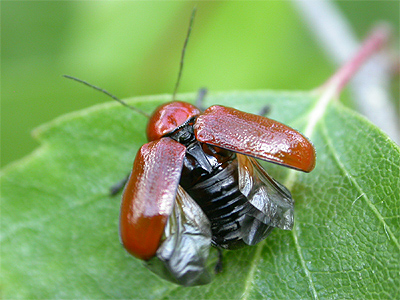 |
On May 9th 2011 we were
able to conduct a rather unique survey with the very kind
help of WKW Tree Services. The survey was based at tree
top height, using a cherry picker operated by the
extremely willing and very helpful Matt Vaughan. At the
end of six hours, a total of 14 C.coryli had been
located, which was a new site record total despite the
increasingly windy conditions. All but one were found at the very tops of mature Birches lining the southern edge of the favoured plantation, including one mating pair. With the wind being so gusty at times, all of the beetles were slightly down the Birch stems, clinging on tightly in the manner we had noted only recently, even at lower levels when conditions are similar. In calm, sunny weather, adult coryli tend to sit on the middle of the leaf, usually along the mid-rib. |
|
| ... | ||
| We began our survey at
the most northerly location Cryptocephalus coryli
have been found in the last four years. Searches were
made of mature Birch trees in the most promising
locations (generally south facing and sheltered) and up
to the maximum height we could go, which was about 15
metres. Much depended on the state of the trees
themselves. We had noticed in early May 2011 that there
were favoured branches and possibly favoured trees, where
two and sometimes three adults could be seen using
binoculars and a telescope from the ground. Although
there was some evidence to support this through the
survey, similar work really needs to be done on a number
of dates and in more suitable weather conditions to
produce any real confirmation. Despite not being touched by early May's frost, the very dry Spring weather has had an effect on many of Sherwood's Birches, with the leaves being small, deformed and the amount of foliage on some trees being distinctly thin. Trees showing much thicker foliage were the ones that often produced coryli. Favoured trees producing beetles were often slightly smaller and younger. |
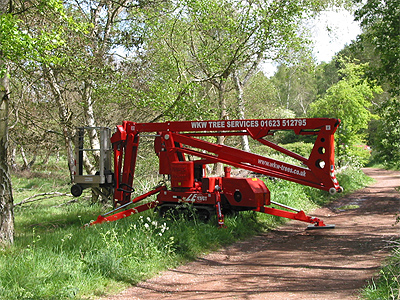 |
|
| ... | ||
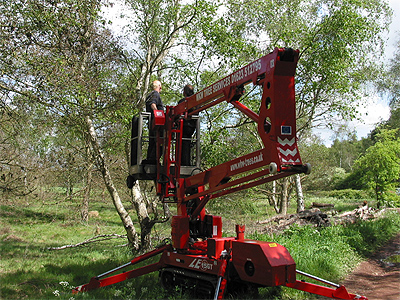 |
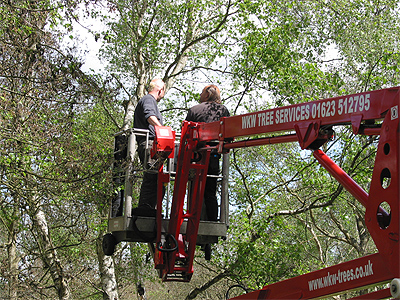 |
|
| ... | ||
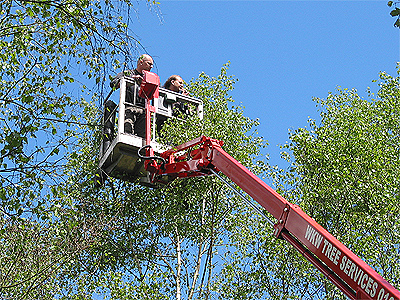 |
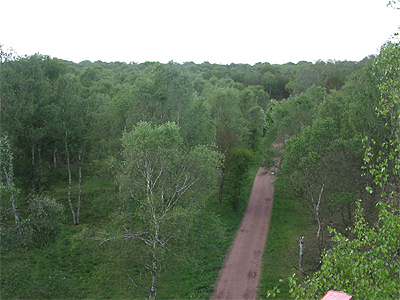 |
|
| ... | ||
| Because the frost on one night in the first week of May had severely damaged the Oak leaves and rendered them useless as a food source for coryli, none of the larger Oaks along the compartment edge were thoroughly checked from height. Although several females had been found on smaller, similarly frost-affected scrub Oaks, even searching for a red beetle was still too much like looking for a needle in a haystack and an impossible task. | ||
| ... | ||
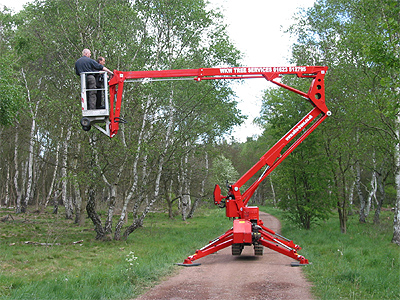 |
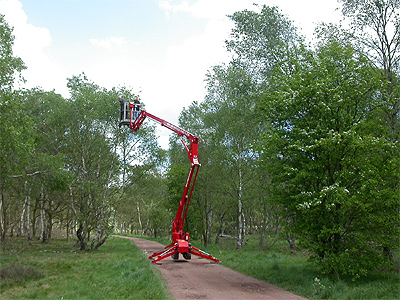 |
|
| ... | ||
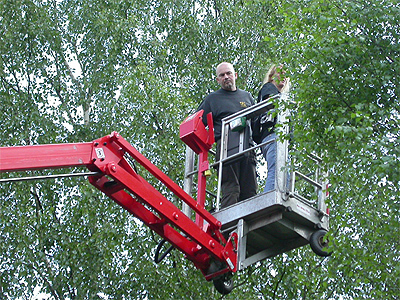 |
Searching for coryli
in the conditions we had was difficult. The desired plan
of being able to use binoculars to scan the upper levels
of the trees from height, soon having to be abandoned in
favour of a much closer inspection within suitable
branches of foliage that we were able to physically
reach, or see well enough with the unaided eye. One of
the problems we had even with this method though, was
that one minute you were more or less in the tree working
through the thinner branches, then the next it was over
ten feet away in the wind. The first 100 metres of favourable looking trees along the compartment edge we searched, had provided nothing on this occasion, although in previous years we had had several coryli records from along this stretch at ground-level. It took a while to find our first coryli of the day, when Dilys and Matt located two females and a male on a section of Birch overhanging the path. Immediately across the path, another Birch produced a mating pair with an additional male very close by, but all on the same branch where the foliage was quite dense and of good quality. |
|
| ... | ||
| Both trees that produced our first coryli were slightly smaller than the largest of the Birches in this area. The location of the trees where the first coryli were found, more or less matched where we had seen coryli at both ground level on scrub Birch and Oak, and at the tops of Birches using binoculars. This began to give us an indication that there may indeed be favoured (key) trees that the adults tend to use, but whether this is through location (in view of shelter and a southerly aspect) or a better quality food source is not known. | ||
| ... | ||
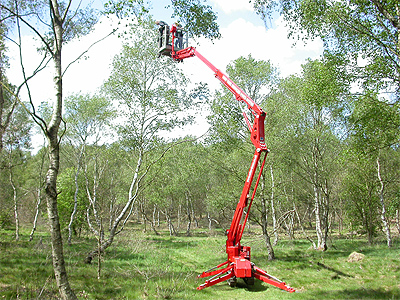 |
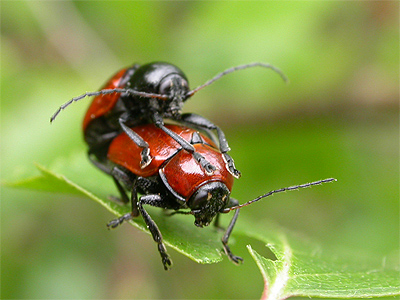 |
|
| ... | ||
| The tree top view in the
photograph on the right, shows the location of the first
three coryli Dilys and Matt found, on the Birch foliage
nearest camera. The photograph does help to show the
height at which coryli can be located and seem to favour.
The photograph also shows the first section of path we
surveyed. In general, this is a good location for coryli,
with a good number of previous records coming from the
grass area immediately behind the Birch in the
foreground. Based on our observations over the past few years and those already noted in 2011, we continue to think that maybe too much emphasis has been placed on the 'key trees' usually associated with coryli, on the basis that key trees are usually small and easier to check for coryli than much larger trees, possibly leading to the misconception that key trees are habitually used by successive generations of females. We are inclined to think that after spending many hours checking several supposed key trees at Sherwood CP (usually scrub Hawthorn and Birch) that we would have expected to have noted males flying around them or sat on them, in their search for females. |
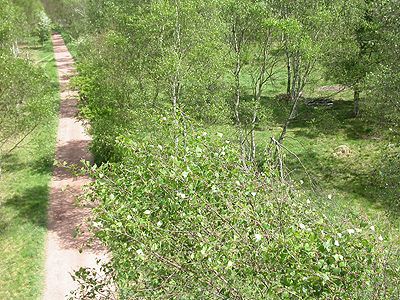 |
|
| ... | ||
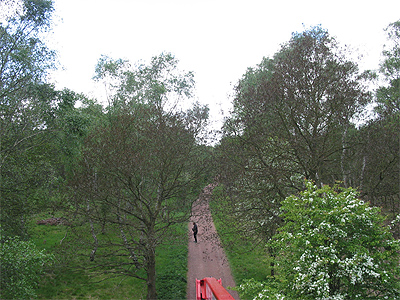 |
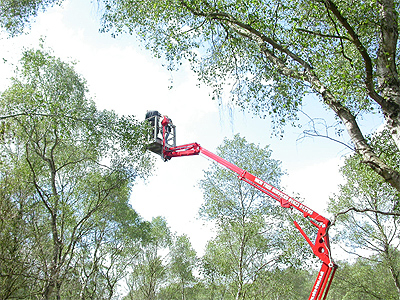 |
|
| ... | ||
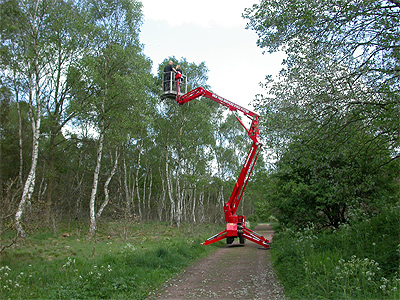 |
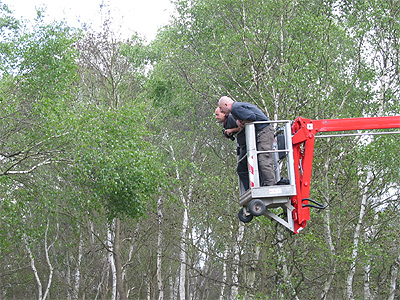 |
|
| ... | ||
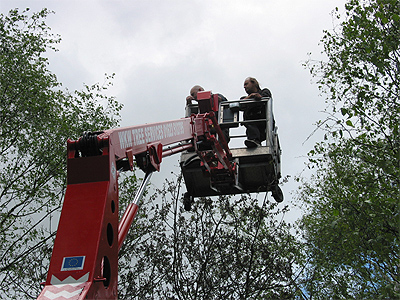 |
As we continued the
survey after a break for some lunch, more coryli were
found as we worked our way along the southern edge of the
plantation. Some scrub Oak is present the whole length of
this section, but cannot be seen after defoliation caused
by the frost. It was hoped that many more coryli
would be present on the trees along here, but this
section of the survey area was hampered even more by the
wind. The two photograph immediately above, show quite well the type of foliage and location that produce the best results, although this one particular length of the plantation, has yet to produce any coryli. Since 2008 when we first began to work with this beetle, two main areas have been located, with a clear gap in the number of records between. The very high number of beetles seen this year to date (May 10th 2011) has enabled a slight closing of this gap, but even though there are several suitable trees in this section, we drew a blank on this occasion. Not all the trees could be checked along here, as conservation work during the Winter to create additional suitable coryli habitat, now means that it would be neccessary to go onto the grass, in order to be close enough to check for coryli even using a cherry picker. |
| ... | |
| As Matt assisted Dilys and myself in our search, single adults were found on the slightly smaller Birches along this section. As had been the case earlier on in the day, the beetles were all found down the stems near the outer most branches clinging on as shown in the photograph below right. This is presumably the tactic that they also employ when it is raining, but despite their red colouration, coryli can be extremely difficult to find, even when on scrub Birch. | |
| ... |
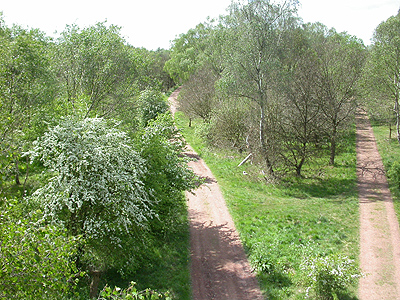 |
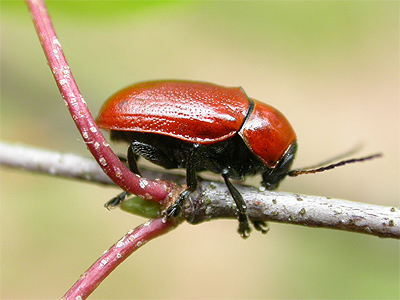 |
| ... | |
| Cryptocephalus
coryli records from May 9th 2011 In all, a total of 12 adult coryli were located on mature Birches. Combined with single females found on two scrub Birch, the day's total was more than we had expected given the conditions. Had conditions been perfect, we firmly believe that the count would quite easily have been doubled. |
|||||||||
| ... | |||||||||
| Pendleton, T.A. and D.T. | .. | Female | .... | .. | On scrub Birch. | ||||
| Pendleton, T.A. and D.T. and Vaughan, M. | .. | Female | .. | .. | On high branches of mature Birch | ||||
| Pendleton, T.A. and D.T. and Vaughan, M. | .. | Female | .. | .. | On high branches of mature Birch | ||||
| Pendleton, T.A. and D.T. and Vaughan, M. | .. | Male | .. | .. | On high branches of mature Birch | ||||
| Pendleton, T.A. and D.T. and Vaughan, M. | .. | Female | .. | .. | On high branches of mature Birch, observed mating with male | ||||
| Pendleton, T.A. and D.T. and Vaughan, M. | .. | Male | .. | .. | On high branches of mature Birch, observed mating with female | ||||
| Pendleton, T.A. and D.T. and Vaughan, M. | .. | Male | .. | .. | On high branches of mature Birch | ||||
| Pendleton, T.A. and D.T. and Vaughan, M. | .. | Male | .. | .. | On high branches of mature Birch | ||||
| Pendleton, T.A. and D.T. and Vaughan, M. | .. | Male | .... | .. | On high branches of mature Birch | ||||
| Pendleton, T.A. and D.T. and Vaughan, M. | .. | Female | .. | .. | On high branches of mature Birch | ||||
| Pendleton, T.A. and D.T. and Vaughan, M. | .. | Female | .. | .. | On high branches of mature Birch | ||||
| Pendleton, T.A. and D.T. | .. | Female | .. | .. | On scrub Birch, present from previous day | ||||
| Pendleton, T.A. and D.T. and Vaughan, M. | .. | Female | .. | .. | On high branches of mature Birch | ||||
| Pendleton, T.A. and D.T. and Vaughan, M. | .. | Male | .. | .. | On high branches of mature Birch | ||||
| ... | ||
| Part of the enjoyment from the whole day, was getting to see Sherwood Forest from a completely new angle. The following selection of photographs show the Gleadthorpe open, an area of grass heath, completely untouched for longer than anyone can remember. It's an extremely important site within the NNR, notable for its range of spiders and other invertebrates. From the height we were at, it shows this area in a completely new light. What a unique piece of habitat! | ||
| ... | ||
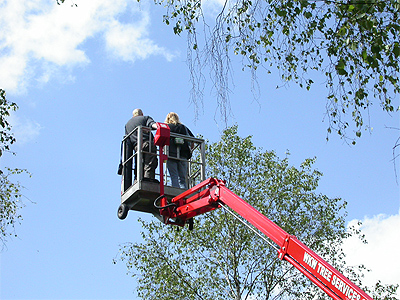 |
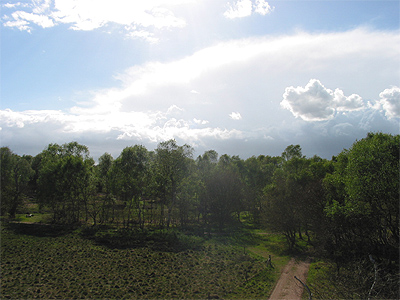 |
|
| ... | ||
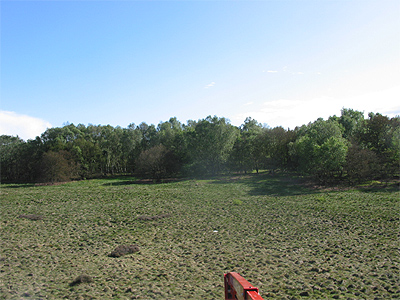 |
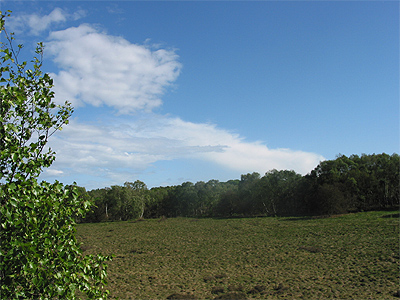 |
|
| ... | ||
| Once again we would like to thank the late Bill Kew-Winder from WKW Tree Services for his generous support in helping us with this unique Cryptocephalus coryli survey and for the use of the equipment. A big thankyou also goes to Matt who operated the cherry picker and gave his own valuable time, interest and support to help us and provided an invaluable extra pair of eyes in our search. | ||